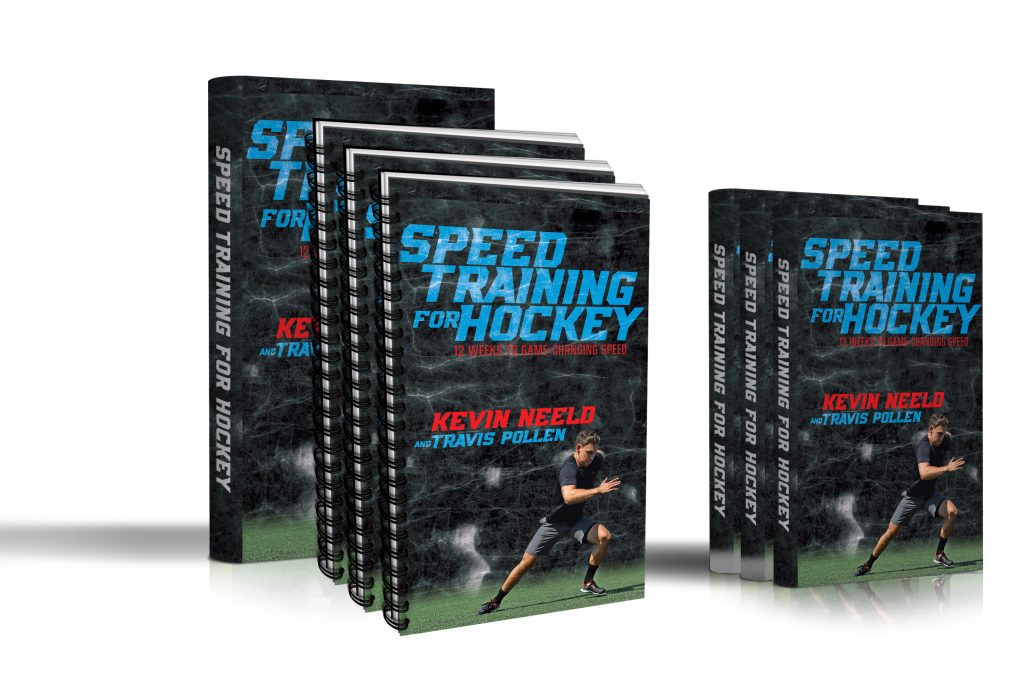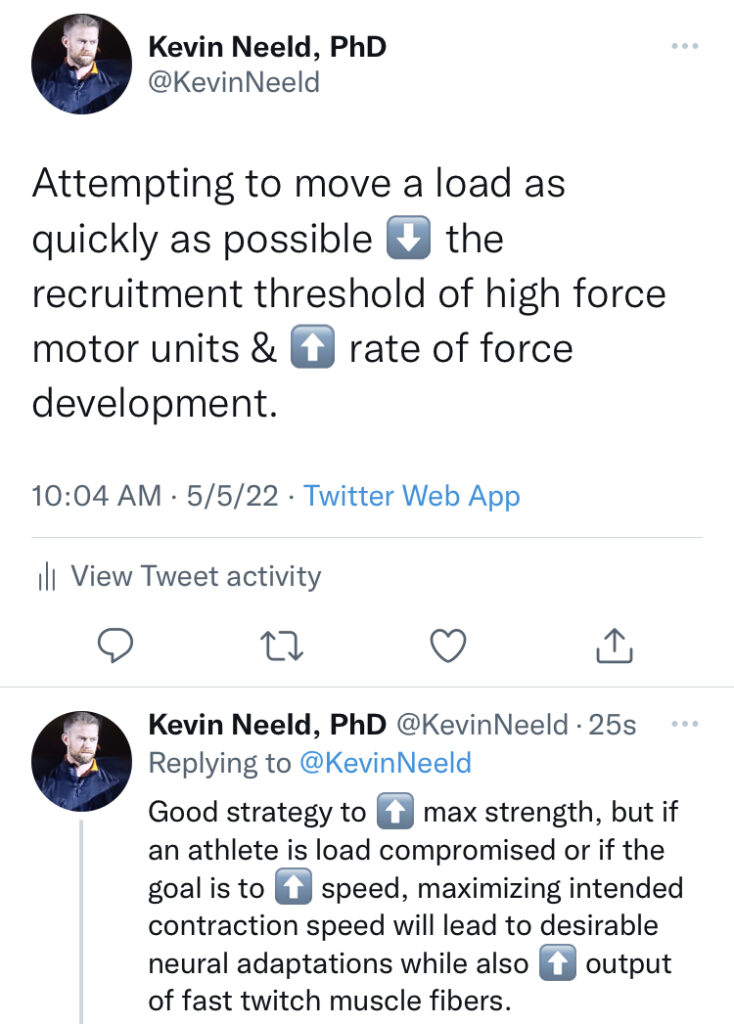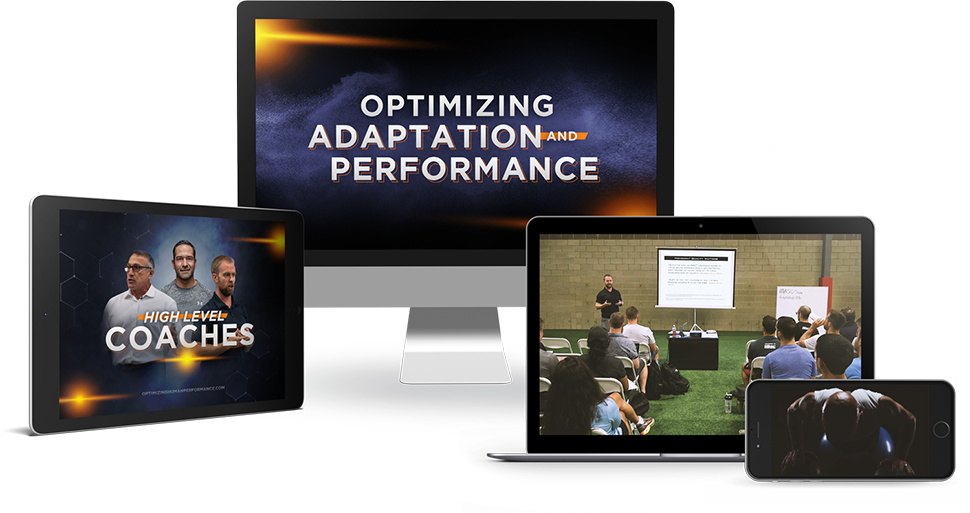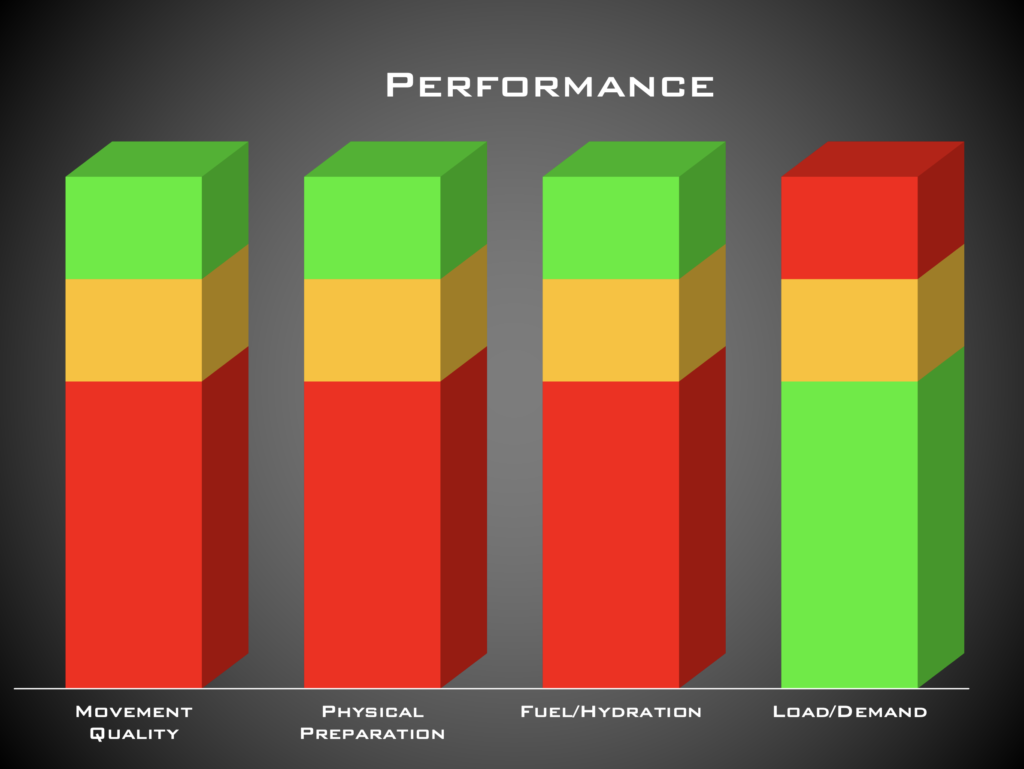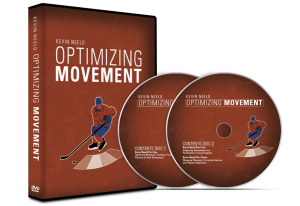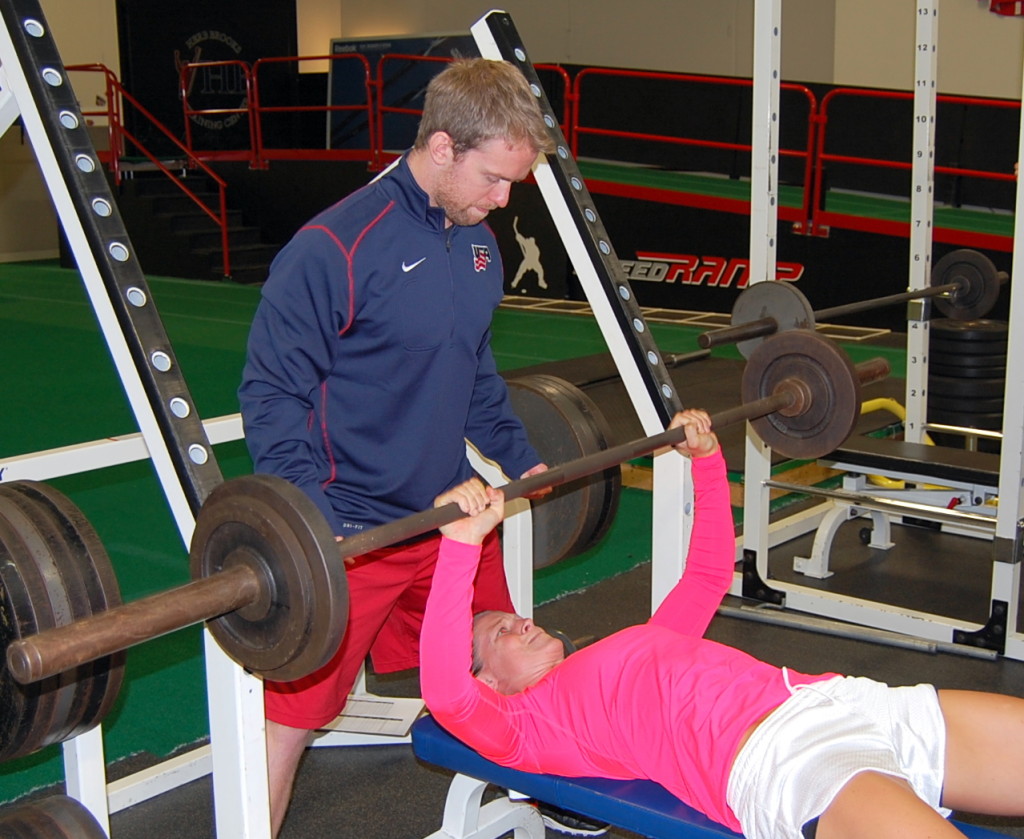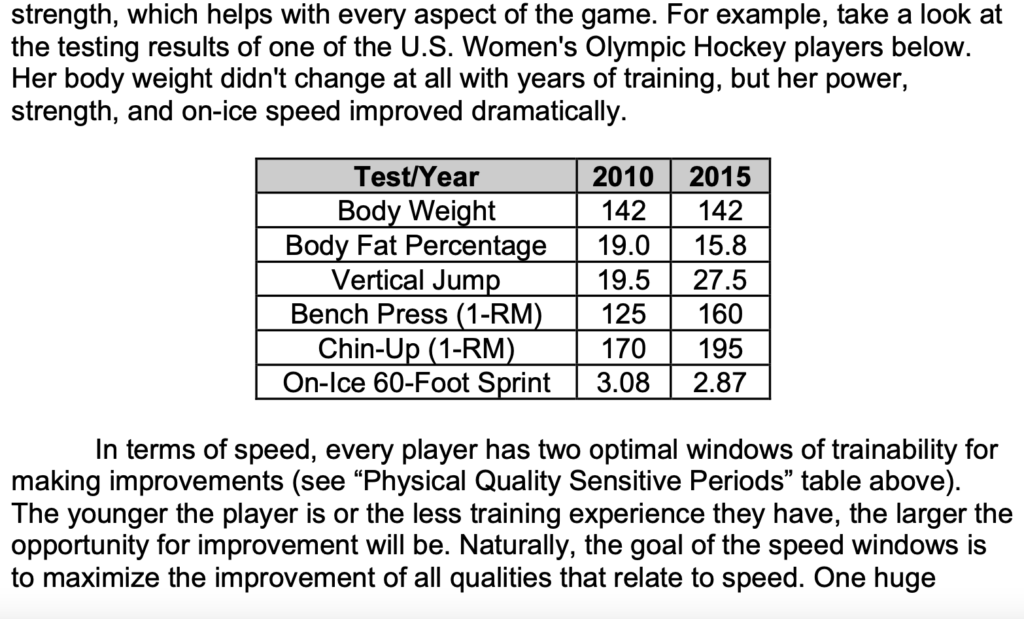In a previous post, I mentioned that limitations in speed development can be identified by asking the below questions:
1️⃣ Can the player get into the right positions?
2️⃣ Can the player hold the right positions?
3️⃣ Can the player push out of the deep positions?
4️⃣ Can the player “explode” out of deep positions?
5️⃣ Can the player create separation?
Related to Question #4, early acceleration phases of skating rely on a more sagittal plane dominant strategy (pushing back), opposed to max speed skating that relies on a more frontal plane dominant strategy (pushing laterally).
This video is of a Med Ball Chest Pass w/ Step, and is an example of an exercise that can positively impact this early acceleration phase, which is often described as “first step quickness” by players and coaches.
The emphasis of the exercise is on an aggressive push through the front leg (see picture). With that in mind, it’s important to:
✅ Set up with an aggressive forward lean over the front foot.
✅ Think of “pushing the ground back” through the front foot to JUMP forward.
✅ As your foot leaves the ground, follow through by throwing the ball as hard as you can toward the wall.
Make sure to leave yourself plenty of room so you can catch the ball safely off the rebound.
Give this a shot, and feel free to post any comments/questions below. If you found this helpful, please share/re-post it so others can benefit.
Feel free to post any comments/questions below. If you found this helpful, please share/re-post it so others can benefit.
To your success,
Kevin Neeld
SpeedTrainingforHockey.com
HockeyTransformation.com
OptimizingAdaptation.com
P.S. For comprehensive hockey training programs to improve your speed AND repeat sprint ability, check out: Speed Training for Hockey
Enter your first name and email below to sign up for my FREE Sports Performance and Hockey Training Newsletter!


